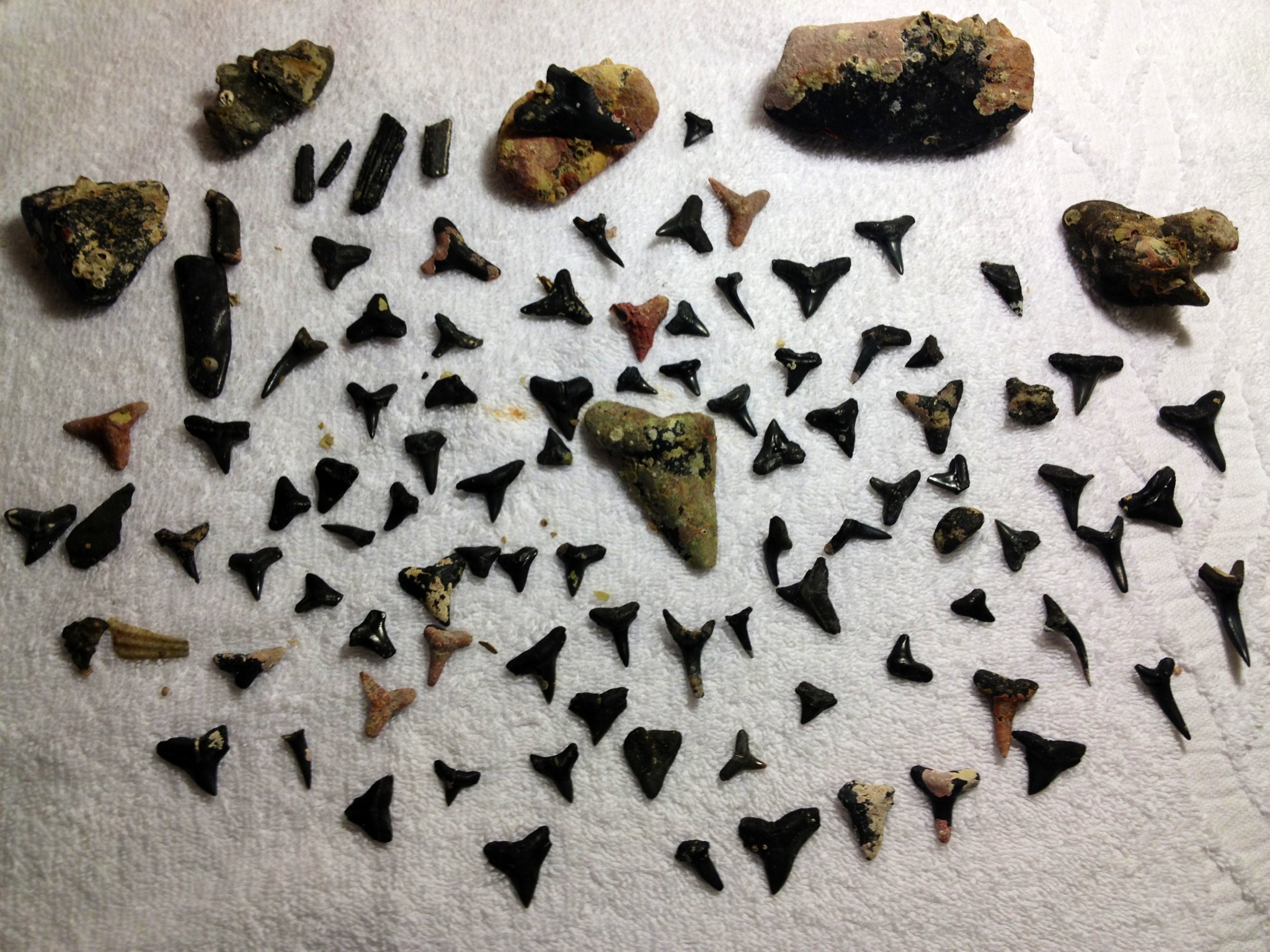I never in all my days thought I’d utter these words: “I’m a shark tooth diver!” Well, my husband along with some other Greater Omaha SCUBA Club Go SCUBA members officially became shark tooth divers this May. Since we all live in the Midwest and are landlocked Scuba divers, to accomplish this very feat six Go SCUBA members took a divecation to the shark’s tooth capital of the world, Venice, Fla. To commemorate our accomplishment, I decided to share our divecation story in conjunction with Discovery Channel’s 2013 Shark Week, which officially kicked off on Aug. 4th.
Our fascination in this divecation came about when a fellow Go SCUBA member spoke about his Florida shark tooth diving adventures at a club meeting. What really sparked our interest, was the fact Dwight even had show-and-tell items on hand at the meeting. There’s nothing like holding a Megalodon shark tooth in your hand to peek your interest. According to Ask.com, Megalodon is an extinct species of shark that lived approximately 28 to 1.5 million years ago. Marine biologists also estimate that the shark was 50 to 65 feet long and weighed 115 tons.
This would be Dwight’s ninth dive with Florida West Scuba & Charters. On this trip, he wouldn’t travel alone but with five other Nebraska Scuba divers (Myself, Brian, Charlotte, Dennis, Dwight and Jerry). Dwight was very excited to share his shark tooth diving experience and even made everyone Fossil Diver T-shirts for the Florida divecation trip.

At the dive site, the Hammerhead crew announced that we would have 12-15 feet of visibility for our dives. All of us Nebraska Scuba divers shrieked with excited! It is a true treat to dive in Nebraska, even with that kind of visibility. On four separate dives, my dive buddy husband and I would spend 70 minutes at 33 feet in the Gulf of Mexico looking for shark teeth. It was truly a rush finding my very first shark tooth. I was so nervous of losing it that I didn’t put it in my mesh bag but inside my glove. Upon surfacing after our first dive everyone laid out their newly found treasures. I was the first of the newbies to actually find any teeth; all were impressed, when I pulled five shark teeth out of my glove. Brian and I found an array of shark teeth: Bull Shark, Lemon Shark, Great White Shark, Mako Shark, Sand Tiger Shark, Snaggletooth Shark, Tiger Shark. The biggest tooth I found was one and half inches; however, I scored a two and a half-inch Megalodon tooth from Captain Dan. We are happy to report one person in our club found a Megalodon shark tooth, too. Jerry found a three and a half-inch Megalodon shark tooth on our very last dive out. He told us when he came upon it–he was literally screaming under the water! Since we flew to Florida, Jerry had a concern on how to transport it back home. He didn’t want to carry it on because it might be considered a weapon, so he packed it in his suitcase. Upon our return to Omaha we dined out with a few other Go SCUBA members and Jerry would proudly pass his Megalodon shark tooth in a Fossil watch box. Everyone truly loved the pairing.
Interested in trying this yourself? If so, here are some tips for newbie shark tooth divers. Do your homework. Call up Youtube and watch videos of people diving for shark teeth. Also, if you know someone whose been on a shark tooth dive ask them about it. On every occasion we were with Dwight, Brian and I asked him a plethora of questions. In my case, I think this made a huge difference to why I could spot the teeth so well. Tips to finding teeth just hover a couple feet off the floor, look for triangle and heart shapes, as well as sharp edges and peaks protruding from the sediment. Really, once you find your first tooth it will be apparent what you are looking for. Captain Steve also recommended we travel where the anchor was dragged along the bottom; since, sediment gets dug up there.
To dive for shark teeth some additional tools are recommended: sifter, sound maker, mesh bag and small storage container for your artifacts. If there isn’t as much sediment you can just wave your hand over the bottom of the sea floor but at times it was very handy to have a digging tool. Brian picked up and used d rings to attach the swifter to our BCD. I recommend a noise maker of sorts. I truly feel we would have found way more teeth–if I didn’t have to stop and keep swimming over to my dive buddy to get his attention. Mesh bags are a must; this is where you will put your finds while underwater. When you surface you also want a container to place your finds in for safe keeping, too. A diver from Las Vegas, who has done the dive many times, said that he had a five-inch tooth placed on a bench when a wave hit the boat to which the tooth slid off off the bench breaking in half. While there we also looked for shark teeth via the shoreline of Venice Beach, too. Believe it or not, I found it easier to Scuba dive 30 feet in the Gulf of Mexico for shark teeth than to comb the shoreline. We found four shark teeth on the Venice shore and 70 on the Gulf of Mexico’s floor.
Let me take this platform to thank Dwight for sharing his shark tooth diving passion with us. To commemorate our time in Venice, on occasion, I proudly wear a homemade Tiger Shark Tooth necklace made by Brian and I. To other Scuba divers out there–we highly recommend this divecation; I truly can’t wait for our next shark tooth diving adventure. Keep diving!
by Guest Blogger Becky Bohan Brown.

